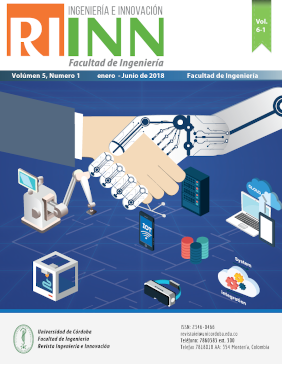Robotik@, a strategy to motivate students to choose engineering careers.
Robotik@, a strategy to motivate students to choose engineering careers.
Mostrar biografía de los autores
Educational robotics is a demonstrated didactical strategy that motivates students to consider engineering careers and benefits both their professional development as well as the learning process. This paper shows an experience carried out in the city of Cartagena de Indias (Colombia) that includes training teachers and facilitating them to take into consideration teaching educational robotics in the secondary school curriculum. The teachers’ training was based on the use of ROBOTREINO, an OER intended to be an educational resource for teachers that introduces them to the world of Educational Robotics. After the training, teachers were able to offer secondary education students a learning experience called ROBOTIK@ based on the use of mobile robots in the field of physics. The experience shows promising results.
Visitas del artículo 620 | Visitas PDF
Descargas
- . Wiley, D., Bliss, T. J., & McEwen, M. (2014). Open Educational Resources: A Review of the Literature. In Handbook of Research on Educational Communications and Technology (pp. 781–789).
- . Wedeward, K., & Bruder, S. (2002). Incorporating Robotics into Secondary Education. In 5th Biannual World Automation Congress (pp. 411–416). https://doi.org/10.1109/WAC.2002.1049473
- . Dias, M. B., Browning, B., Mills-Tettey, G. A., Amanquah, N., & El-Moughny, N. (2007). Undergraduate Robotics Education in Technologically Underserved Communities. In IEEE International Conference on Robotics and Automation (pp. 1387–1392). https://doi.org/doi: 10.1109/ROBOT.2007.363178
- . Galvan, S., Botturi, D., Castellani, A., & Fiorin, P. (2006). Innovative robotics teaching using LEGO sets. In IEEE International Conference on Robotics and Automation (pp. 721–726).
- . Gilkes, T., Radix, C., & Ringis, D. (2014). Across-the-ages: A study of robotics in Caribbean education. In 2014 IEEE Frontiers in Education Conference (FIE) Proceedings (pp. 1–5). https://doi.org/10.1109/FIE.2014.7044458
- . Hrbáček, J., Strach, M., & Kučera, J. (2013). Teaching robot programming can be a new opportunity for technical subjects of study. In IEEE 11th International Conference on Emerging eLearning Technologies and Applications (ICETA) (pp. 133–137). https://doi.org/10.1109/ICETA.2013.6674418
- . Aroca, R. V., Gomes, R. B., Tavares, D. M., Souza, A. A. S., Burlamaqui, A. M. F., Caurin, G. A. P., & Goncalves, L. M. G. (2013). Increasing Students’ Interest with Low-Cost CellBots. IEEE Transactions on Education, 56(1), 3–8.
- Meyer, A., Rose, D. H., & Gordon, D. (2014). Universal design for learning: Theory and Practice. Wakefield, MA: CAST Professional Publishing.
- . Electro. (2017). PYGMALION. Retrieved June 14, 2018, from https://pygmalion.te





